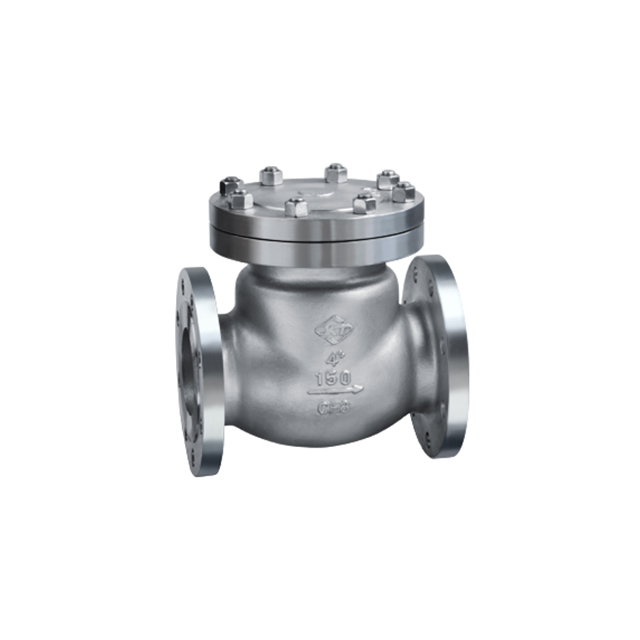Swing-type check valves use a hinged disc to block and regulate fluid flow. If the valve malfunctions, it can result in leakage, pressure loss, contamination, or overflow of liquid.
Swing check valves are commonly used in water, wastewater, and industrial fluids applications. Unfortunately, they cannot handle pulsating or abrupt flow reversals and may experience water hammering.
- Pressure Tests
Swing-type check valves feature a disc on a hinge that opens and closes under pressure, typically used in water and wastewater applications.
Swing check valves come in metal-to-metal or resilient seated designs, the latter being preferred for applications where dirt or other particles may be present in the fluid.
Hydro testing swing-type check valves typically involves applying twice the operating pressure. This method allows technicians to assess a valve’s ability to withstand extreme pressures in both directions.
Safety valve bodies and seats must be tested according to API 607, ISO 10497, BS 5146, and BS 6755 standards before the final delivery of the product. Furthermore, seals at packing and gasket attachments must also be examined for leakage rates specified in these tests.
- Temperature Tests
Swing check valves are self-acting, fast-closing valves used to prevent backflow in pipelines. They’re commonly found in water and wastewater applications but may also be suitable for other viscous media.
Temperature testing consists of submerging a valve in an appropriate solution for an agreed-upon period of time, simulating the environment that it will experience throughout its service life.
Technicians then measure the temperature at two different points on the valve and report any leakages to the customer. These leakage rates are used to assess the quality of a valve’s design.
Cryogenic testing involves placing a valve in an insulated tank filled with liquid nitrogen at temperatures as low as -320degF (-196degC). Technicians monitor the valve’s performance and leakages throughout this process. Once depressurized and warmed back to ambient temperature, results can be reported.
Hydrostatic testing utilizes a test pump and water supply to pressurize the piping system at an established pressure. This ensures that all fittings have been securely connected, with no leaks that could cause issues during firefighting operations.
Testing also guarantees the piping system has been constructed and designed in accordance with applicable codes, an essential step in preventing standpipes or sprinkler systems from failing during a fire.
It is essential to note that hydrostatic tests must be conducted under high-pressure conditions and can take many hours. In Canada, for instance, pipelines known to be affected by SCC must undergo hydro testing at a pressure of at least 1.5 times their system working pressure with an additional hold time of several hours.
Hydro testing a swing-type check valve involves several tests. These include strength and sealing tests, bubble tests, backflow checks, and more.
- Visual Inspection
Visual inspections are essential for spotting defects that could cause costly repairs and downtime. They’re also an integral part of your preventive maintenance program.
Visual inspection: Technicians observe the inside of a valve body to look for any signs of damage. They may use non-destructive testing techniques to confirm wall thicknesses and detect small cracks or other surface irregularities.
Another popular visual inspection technique for valves is phased array sequence scanning, which allows operators to examine the valve’s operation without exposing its body to harmful chemicals or other impurities.
Swing check valves are typically installed horizontally, though they can also be mounted vertically. Unfortunately, gravity may impact the fluid flow if installed vertically – leading to inadvertent pass-bys and potential leaks. If the vertical installation is necessary, engineers should design the valve so that upward movement of air and liquid is ensured.
Here is a video on how swing check valves work, hope this will help you.
XINTAI Valve is a manufacturer of industrial valves, such as control valves, cryogenic valves, gate valves, globe valves, ball valves, and check valves. Additionally, they offer related services and ancillary equipment.
Established in 1998, XINTAI Valve has earned a well-deserved reputation for producing superior valves of superior quality and performance. Their products are used extensively across industries such as petroleum, chemical, energy, metallurgy, medicine, and more.










